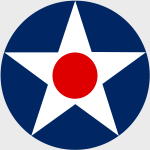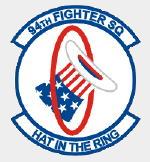Hobby Master HA7501 Boeing P-26A Peashooter Fighter - 94th Pursuit Squadron, Selfridge Field, Michigan, 1935-36 (1:48 Scale)
"Why should we have a navy at all? There are no enemies for it to fight except apparently the Army Air Force."
- General Carl Spaatz, Commander of the US 8th Army Air Force, after WWII
 The American Boeing P-26, nicknamed the "Peashooter", was the first all-metal production fighter aircraft and the first pursuit monoplane used by the United States Army Air Corps. The prototype first flew in 1932, and were used by the Air Corps as late as 1941 in the Philippines.
The American Boeing P-26, nicknamed the "Peashooter", was the first all-metal production fighter aircraft and the first pursuit monoplane used by the United States Army Air Corps. The prototype first flew in 1932, and were used by the Air Corps as late as 1941 in the Philippines.
The Boeing-funded project to produce the Boeing Model 248 began in September 1931, with the Army Air Corps supplying engines and instruments. The design included an open cockpit, fixed landing gear and externally braced wings, the last such design procured by the USAAC as a fighter plane. It also saw the introduction of flaps to reduce speeds for landings. The Army Air Corps contracted for three prototypes, designated XP-936, with the first flight on March 20th, 1932.
The Boeing XP-936 had a landing problem. Sometimes when landing it would flip forward and because of the short nose it would roll onto its back. This injured many pilots until the unarmored back canopy was replaced with an armored headrest. An additional 25 aircraft were completed as P-26Bs, with Pratt & Whitney R-1340-33 Wasp engines, and 23 P-26Cs had minor changes to carburation and the fuel system. Both Spain (one fighter) and China (11 fighters) ordered the Model 281 export version of the P-26C in 1936.
The diminutive "Peashooter" as it became affectionately known by service pilots, was faster than previous American combat aircraft, but it was also an anachronism. Although the P-26 introduced a modern monoplane design, worldwide fighter aircraft developments soon outstripped the P-26. In Europe the Messerschmitt Bf 109 and Hawker Hurricane with closed cockpits and which both flew for the first time in 1935 were more representative of contemporary monoplane fighter designs. However, the P-26 was easy to fly and remained in active service for many years until the United States entered World War II.
Pictured here is a 1:48 scale replica of a Boeing P-26A Peashooter fighter that served with the 94th Pursuit Squadron, then operating out of Selfridge Field, Michigan, from 1935-36.
Sold Out!
Dimensions:
Wingspan: 8-inches
Length: 5-3/4-inches
Release Date: June 2009
 Historical Account: "In Pursuit of Happiness" - The 94th Fighter squadron returned home in the spring of 1919, and after several moves, the 94th settled at Selfridge Field, Michigan, in July 1922. In 1923, the unit was re-designated the 94th Pursuit Squadron. The squadron stayed in Michigan for the remainder of the inter-war years, training in its pursuit role. The squadron flew 17 different aircraft during this period, culminating with the P-38 Lightning. One week after Pearl Harbor, the 94th moved to San Diego Naval Air Station. Expecting to see action in the Pacific, the squadron instead received orders for Europe. In the summer of 1942, the 94th deployed under its own power to England, the U.K., via Canada, Labrador, Greenland, and Iceland. This marked the first time that a fighter squadron flew its own aircraft from the United States to Europe.
Historical Account: "In Pursuit of Happiness" - The 94th Fighter squadron returned home in the spring of 1919, and after several moves, the 94th settled at Selfridge Field, Michigan, in July 1922. In 1923, the unit was re-designated the 94th Pursuit Squadron. The squadron stayed in Michigan for the remainder of the inter-war years, training in its pursuit role. The squadron flew 17 different aircraft during this period, culminating with the P-38 Lightning. One week after Pearl Harbor, the 94th moved to San Diego Naval Air Station. Expecting to see action in the Pacific, the squadron instead received orders for Europe. In the summer of 1942, the 94th deployed under its own power to England, the U.K., via Canada, Labrador, Greenland, and Iceland. This marked the first time that a fighter squadron flew its own aircraft from the United States to Europe.
In November 1942, as part of the newly re-designated 1st Fighter Group, the 94th Fighter Squadron went into combat in North Africa. Based in Algeria, Tunisia, and Italy, the 94th again distinguished itself in combat by winning two Presidential Distinguished Unit Citations as part of the 1st Group. In addition, the squadron earned 14 Campaign honors, participating in almost every campaign in North Africa and Europe. 64 pilots of the 94th Fighter Squadron were credited with 124 Axis aircraft destroyed. The 94th produced a total of six aces in World War II. In April 1945, the 1st Fighter Group received two YP-80 jets for operational testing. The 94th Squadron's Major Edward LaClare flew two operational sorties in the YP-80 although without encountering combat.


